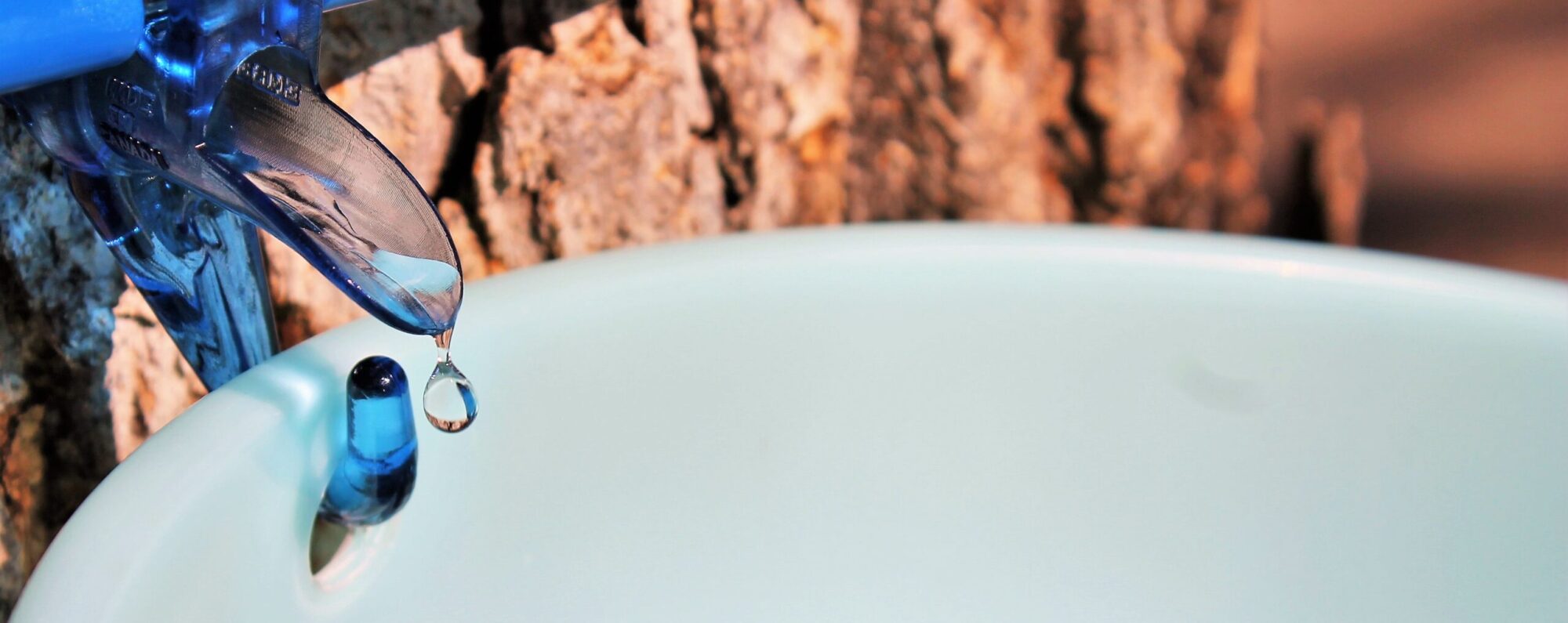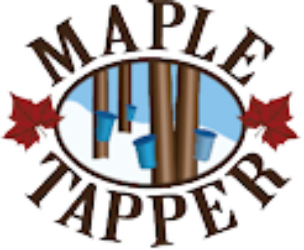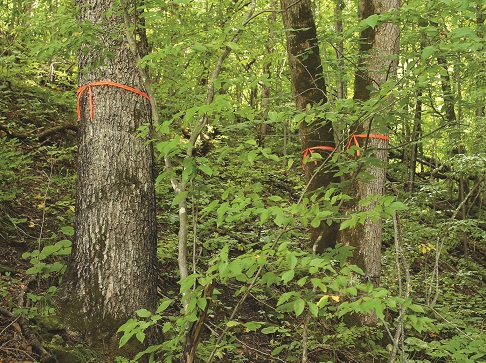
For first time tappers (and sometimes, even seasoned sugarmakers), finding your sugar maples in the woods can be much harder than you expect! You think you’ll remember where they are but when everything is gray, brown, and white, the trees start to look the same! And with no leaves (or even trails) to point you in the right direction, you’re standing in the cold trying to identify trees by the bark.
Make your life easier – and have a good excuse to visit the woods in the summer or fall – and go out and mark your trees while they’re in full leaf. The quickest method we’ve found is tying bright surveyor’s ribbon tape around the trees we plan to tap. This can be found at most hardware and home improvement stores or online and comes in a variety of colors. It’s weatherproof and slightly stretchy so it won’t constrict the tree. And it gives you a reason to go out and hug your trees (you know you want to)! For more advanced sugarbush keepers, this ribbon tape is also a good way to identify non-maple trees to be trimmed for easier access or trailmaking.
While you can tap soft maples, walnut, and birch (details on tapping those varieties here), sugarmakers choose hard maples because the sap has the highest sugar content (so, much shorter boiling time) and the sweetest, most robust maple flavor. If you’re still learning how to identify a sugar or hard maple, look first at the leaves and the seeds (aka spinners or helicopters). These will quickly give you the info you need to find the hard maples:
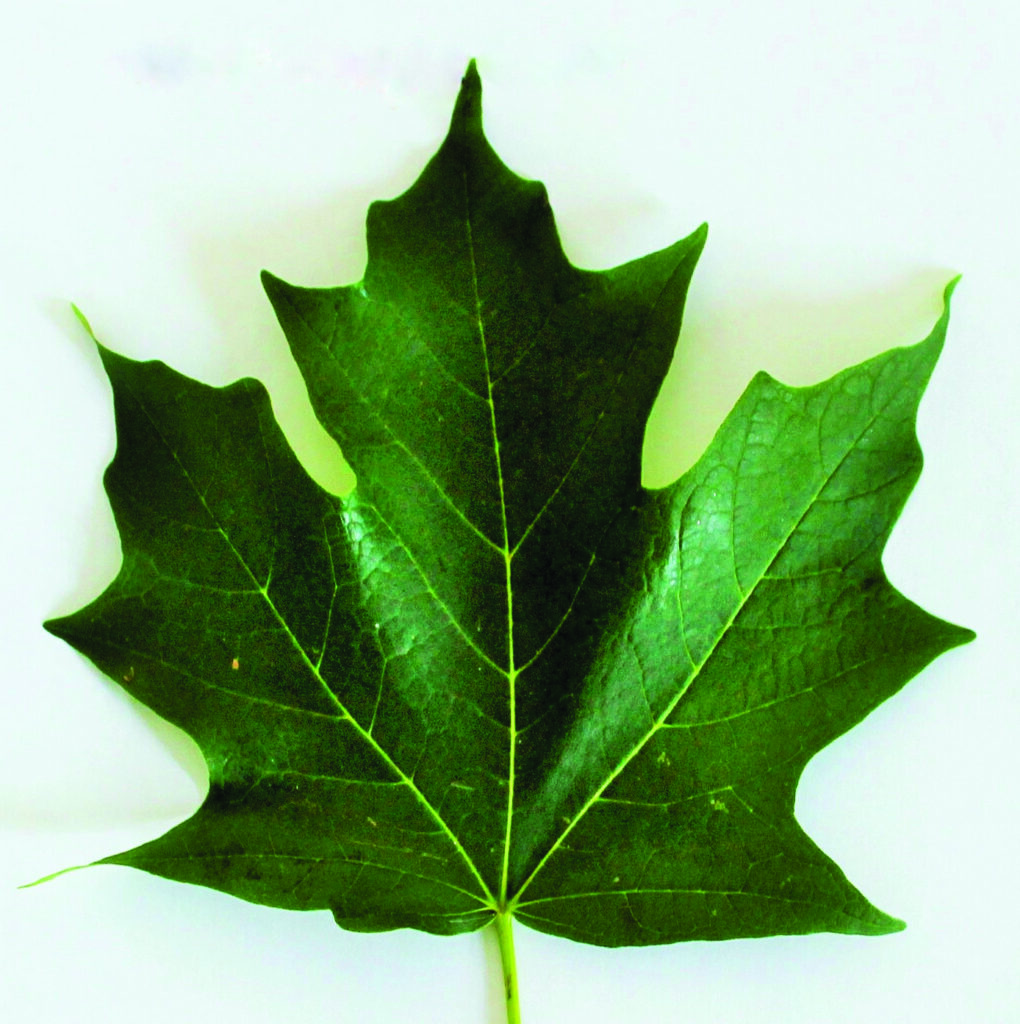
Hard maples have more rounded leaf lobes; more brightly colored autumn colors (especially reds and oranges), and drop seeds in the fall).
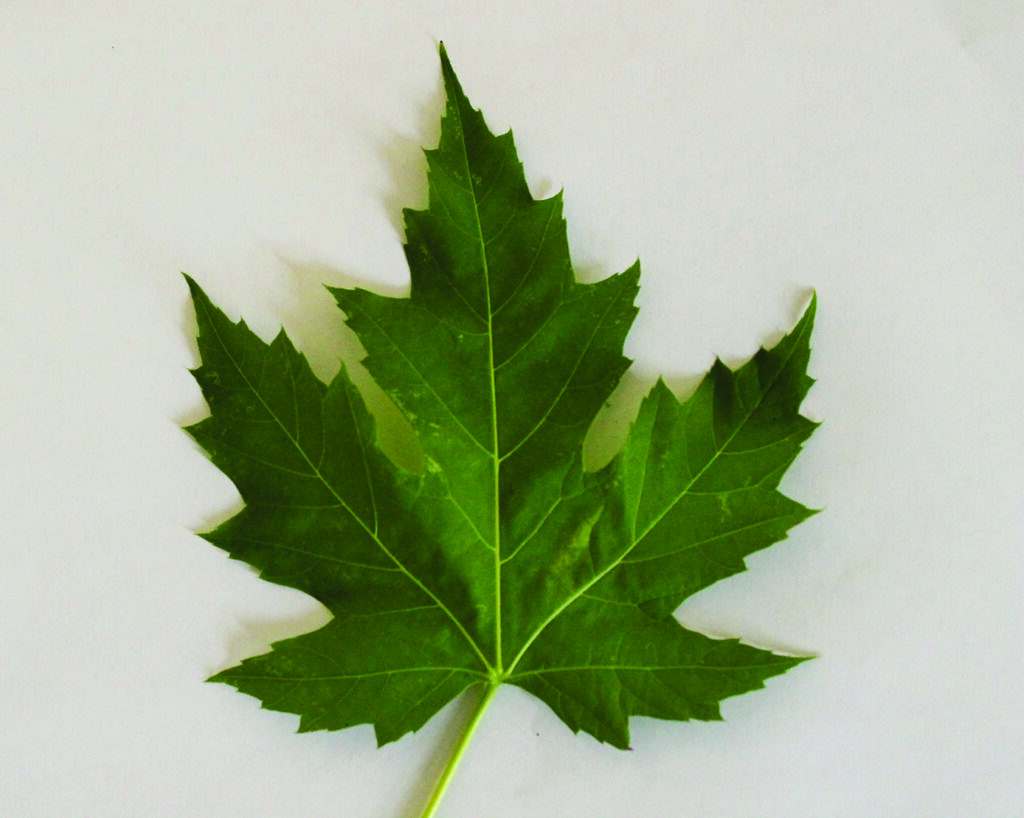
Soft maples have more “toothed” or pointed leaf lobes, typically more yellow colors in the fall, and drop seeds in the spring.
Lots more identification tips can be found at this University of Maine Extension office article.
